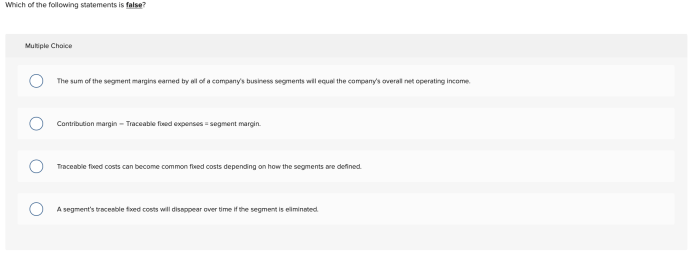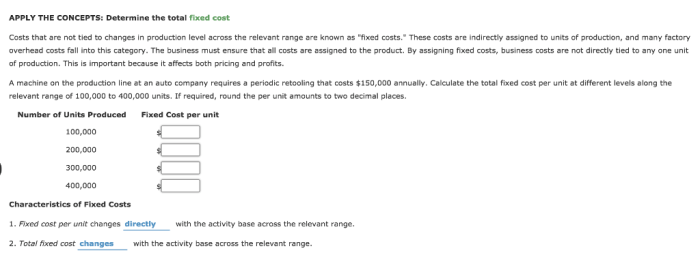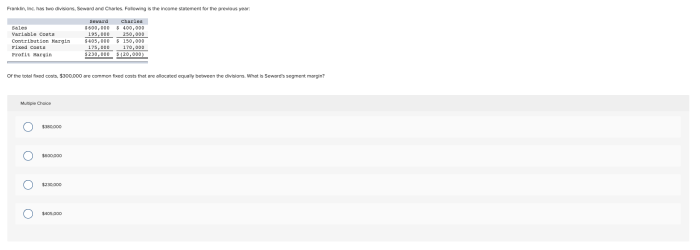Common fixed costs that are allocated among departments are generally an important aspect of managerial accounting. Understanding the concept and allocation methods of these costs is crucial for accurate financial reporting and decision-making.
This comprehensive guide delves into the intricacies of common fixed costs, exploring their characteristics, allocation methods, and impact on departmental performance. By shedding light on these essential concepts, this article empowers readers to make informed decisions regarding cost allocation and financial management.
Overview of Common Fixed Costs

Fixed costs are expenses that remain relatively constant regardless of the level of production or activity. They are incurred even when no goods or services are produced. Common fixed costs are those that are shared by multiple departments or units within an organization.
Characteristics of common fixed costs include:
- Incurred regardless of activity level
- Shared by multiple departments
- Not easily traced to specific departments
Examples of common fixed costs include:
- Rent
- Utilities
- Insurance
- Salaries of administrative staff
Allocation of Common Fixed Costs

Common fixed costs must be allocated among departments to determine the cost of each department’s operations. Different allocation methods can be used, each with its own advantages and disadvantages:
Direct Allocation, Common fixed costs that are allocated among departments are generally
Direct allocation assigns fixed costs to departments based on their direct usage of the resources. This method is simple and easy to understand, but it may not be accurate if the costs are not directly related to the department’s activity level.
Indirect Allocation
Indirect allocation assigns fixed costs to departments based on an indirect measure of their activity, such as square footage, number of employees, or sales revenue. This method is more complex than direct allocation, but it can be more accurate if the indirect measure is a good proxy for the department’s activity level.
Activity-Based Allocation
Activity-based allocation assigns fixed costs to departments based on the activities they perform. This method is the most complex, but it can be the most accurate if the activities are clearly defined and measured.
Impact of Allocation Methods on Departmental Performance

The allocation method used can have a significant impact on departmental performance. For example, if a department is allocated more fixed costs than it actually incurs, it may appear to be less profitable than it actually is. This can lead to incorrect decisions about the department’s future.
It is important to choose an allocation method that is fair and equitable, and that reflects the actual costs incurred by each department.
Best Practices for Allocating Common Fixed Costs

There are a number of best practices that can be followed when allocating common fixed costs:
- Establish guidelines for allocating costs fairly and equitably.
- Implement transparent and consistent allocation procedures.
- Regularly review and adjust allocation methods as needed.
By following these best practices, organizations can ensure that common fixed costs are allocated fairly and equitably, and that the allocation method used does not distort departmental performance.
FAQ Section: Common Fixed Costs That Are Allocated Among Departments Are Generally
What are common fixed costs?
Common fixed costs are indirect costs that do not vary with the level of activity within a department but are incurred for the benefit of multiple departments.
How are common fixed costs allocated among departments?
Common fixed costs can be allocated using various methods, such as the direct benefit method, the activity-based method, and the equal allocation method.
What is the impact of allocation methods on departmental performance?
The choice of allocation method can distort departmental profitability and decision-making, as different methods can result in different cost assignments to departments.